There are several ways to consider ‘point of view’ in a story.
Objectively, one can look to see whether a story is told from the first person, second person or the third person point of view. The narrator in a story told from the first person point of view uses the pronoun “I”, while the narrator in a story told from the third person point of view uses the pronoun “he” or “she”. In the second person point of view, the story is told using the pronoun “you’. Here are some picture books that illustrate this concept.
First person point of view:
Beaumont, Karen. I Ain’t Gonna Paint No More! Harcourt, 2005.
Bunting, Eve. Riding the Tiger. Clarion Books, 2001.
Carrier, Roch. The Hockey Sweater. Tundra Books, 1979.
Carter, Anne Laurel. Under a Prairie Sky. Orca Publishers, 2002.
Gregory, Nan. Pink. Groundwood Books, 2007.
Hesse, Karen. Come on, Rain! Scholastic Press, 1999.
Keats, Ezra Jack. Peter’s Chair. Harper & Row, 1967.
Maloney, Peter. The Magic Hockey Stick. Dial Books for Young Readers, 1999.
Parker, Robert Andrew. Piano Starts Here: The Young Art Tatum. Schwartz & Wade Books, 2008.
Recorvits, Helen. My Name is Yoon. Frances Foster Books, 2003.
Royston, Angela. Ancient Greek Adventure. Crabtree, 2011.
Royston, Angela. Space Blog. Crabtree, 2011.
Spilsbury, Richard. Deep Sea Exploration. Crabtree, 2011.
Parry, Rosanne. A Wolf Called Wander. New York: Greenwillow Books, an imprint of HarperCollinsPublishers, 2019.
Heart of a Shepherd , about the son of a soldier in Iraq, and Written in Stone , about an indigenous girl during the 1920s, are hauntingly memorable novels by Rosanne Parry: easy to read but hard to forget. A Wolf Called Wander is another remarkable story by the same author. This time, the protagonist is a wolf, Swift, who is separated from his pack and forced to find a new home far from his old territory. Based on the true story of a wolf who travelled 1,000 miles throughout the Pacific Northwest, this first person account – told from Swift’s point of view – will appeal to animal lovers and environmentalists 10 to 15 years old. A map and additional information about wolves and other animals of the Pacific Northwest are included at the end of the novel.
MacLachlan, Patricia. Prairie Days. New York, Toronto: Margaret K. McElderry Books, 2020.
Any story by Patricia MacLachlan is worth reading. Any book by Margaret K. McElderry is worth looking at. And this picture book illustrated with collages by Micha Archer is no exception. Written from the first-person point of view, it is a wonderfully exuberant celebration of long-ago summers on the American prairies. n excellent read-aloud for family gatherings. Highly recommended for everyone who loves country life.
Second person point of view:
Christian, Peggy. If You Find a Rock. Harcourt, 2000.
Hubbard, Ben. Desert. Crabtree, 2011.
Tan, Shaun. The Red Tree. Simply Read Books, 2003.
Thomson, Sarah L. Imagine A Day. Atheneum Books for Young Readers, 2005.
Wong, Jack. When You Can Swim. New York: Orchard Books, an imprint of Scholastic Inc., 2023.
When you can swim, a whole new world opens up. Treetops drift overhead as you float on your back. Fields of reeds appear as you dive down under the water. Fish feast on insects as you tread water in the twilight. Amazing wonders, exciting adventures, all await you once you can swim. Evocative full-page illustrations help to tell this story written as poetry. Told from the second person point of view and accompanied by an afterword explaining how the author learned to overcome his fear of swimming when he came to Canada as an immigrant child, this beautiful picture book is highly recommended for readers of all ages. (P.S. Teachers will find it invaluable for showing students how to write powerfully without using the rules of punctuation.)
Pelliciolli, Anna. Song of the Old City. New York: G. P. Putnam’s Sons, 2020.
A delightful story set in Istanbul, Turkey. A young girl ventures out into the old city, meeting merchants, making friends, and passing along all the kindnesses shown to her. Cheerful full-page pictures filled with joyous movement illustrate this wonderful picture book highly recommended for readers 6 to 12 years old.
Winter, Jonah. Born and Bred in the Great Depression. New York: Schwartz & Wade Books, 2011.
The author tells the story of his father’s childhood in Texas during the 1930s. Told from the second person point of view, this beautifully designed picture book with pencil, ink, and watercolour illustrations by Kimberly Bulcken Root is accompanied by black and white photographs. Recommended for readers 8 years old and up.
Brown, Marc. In New York. New York: Alfred A. Knopf, 2014.
The acclaimed author of dozens of books – including the stories of Arthur, the aardvark – takes readers on a tour of his favourite city: New York. The conversational style of writing and softly detailed illustrations – in watercolour and gouache – depict a city full of exciting things to see. Recommended for readers 7 years old and up.
Third person point of view:
Bridges, Shirin Yim. Ruby’s Wish. Chronicle Books, 2002.
Carle, Eric. Mister Seahorse. Philomel Books, 2004.
Nivola, Claire A. Planting the Trees of Kenya. Frances Foster Books, 2008.
Park, Linda Sue. The Firekeeper’s Son. Clarion Books, 2004.
Polacco, Patricia. Thank you, Mr. Falker. Philomel, 1998.
Seymour, Tres. Pole Dog. Orchard Books, 1993.
Subjectively, one can look at “point of view” quite differently:
Character as an observer:
Carle, Eric. Mister Seahorse. Philomel Books, 2004.
Carter, Anne Laurel. Under a Prairie Sky. Orca Publishers, 2002.
Hesse, Karen. Come on, Rain! Scholastic Press, 1999.
Rylant, Cynthia. In November. Harcourt, 2000.
Seymour, Tres. Pole Dog. Orchard Books, 1993.
Character as an instigator of change:
Beaumont, Karen. I Ain’t Gonna Paint No More! Harcourt, 2005.
Bridges, Shirin Yim. Ruby’s Wish. Chronicle Books, 2002.
Brown, Don. Odd Boy Out: Young Albert Einstein. Houghton Mifflin, 2004.
Howe, James. Otter and Odder. Candlewick Press, 2012.
Nivola, Claire A. Planting the Trees of Kenya. Frances Foster Books, 2008.
Character as being willing to change:
Bunting, Eve. Riding the Tiger. Clarion Books, 2001.
Polacco, Patricia. Thank you, Mr. Falker. Philomel, 1998.
Gregory, Nan. Pink. Groundwood Books, 2007.
Keats, Ezra Jack. Peter’s Chair. Harper & Row, 1967.
Park, Linda Sue. The Firekeeper’s Son. Clarion Books, 2004.
Recorvits, Helen. My Name is Yoon. Frances Foster Books, 2003.
Another way of looking at point of view is by classifying the “type of conflict”:
Person versus Nature
Carter, Anne Laurel. Under a Prairie Sky. Orca Publishers, 2002.
Person versus Person:
Bridges, Shirin Yim. Ruby’s Wish. Chronicle Books, 2002.
Bunting, Eve. Riding the Tiger. Clarion Books, 2001.
Carrier, Roch. The Hockey Sweater. Tundra Books, 1979.
Keats, Ezra Jack. Peter’s Chair. Harper & Row, 1967.
Shannon, David. David Goes to School. Scholastic, 1999.
Person versus Self:
Park, Linda Sue. The Firekeeper’s Son. Clarion Books, 2004.
Polacco, Patricia. Thank you, Mr. Falker. Philomel, 1998.
It is sometimes fun to write alternate versions of a story, rewriting a story from the point of view of different characters.
Here is a story, to use as an example, that is told from the point of view of several different characters:
Browne, Anthony. Voices in the Park. DK Publishing, 2001.
Here is a story that contains letters written by crayons of various colours:
Daywalt, Drew. The Day the Crayons Quit. Philomel Books, 2013.
Here is a story that tells of Columbus’s arrival in the West Indies told from the point of view of a Taino Indian boy:
Yolen, Jane. Encounter. Harcourt, Inc., 1992.
Here is a story that is told from the whale’s point of view:
Spinelli, Eileen. Jonah’s Whale. Eerdman’s Books for Young Readers, 2012.
Here are some stories that you might like to use for rewriting:
Bunting, Eve. Riding the Tiger. Clarion Books, 2001.
Carrier, Roch. The Hockey Sweater. Tundra Books, 1979.
Polacco, Patricia. Thank you, Mr. Falker. Philomel, 1998.
Recorvits, Helen. My Name is Yoon. Frances Foster Books, 2003.
Seymour, Tres. Pole Dog. Orchard Books, 1993.
Shannon, David. David Goes to School. Scholastic, 1999.
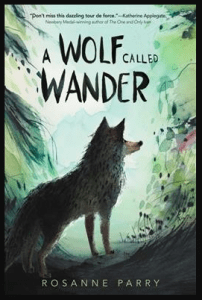
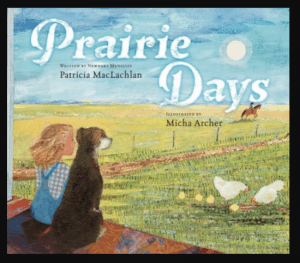
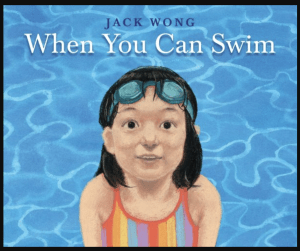
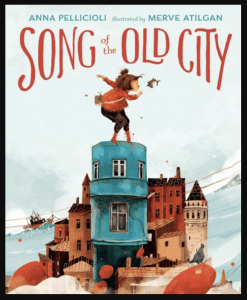
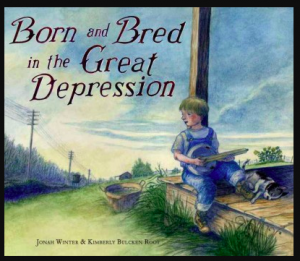
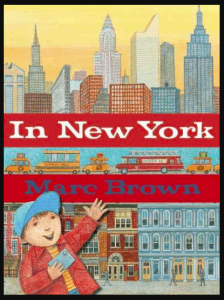

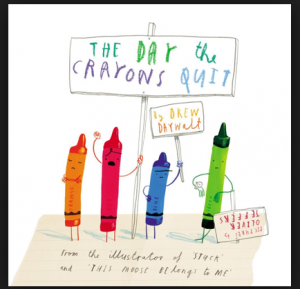


The point of view varies. Compare fiction with nonfiction, adapted novels with original graphic novels. Here is a link to a page that helps you analyze point of view in graphic novels: https://books.google.ca/books?id=AwZrSlcDQvEC&pg=PA28&lpg=PA28&dq=graphic+novel+first-person+point+of+view&source=bl&ots=WiVNgYto2t&sig=U1VWU8yJRqhwpZawC6Q1_lCBKhg&hl=en&sa=X&ved=0ahUKEwju7tCHxq7QAhVDHGMKHUBOC0oQ6AEIOzAF#v=onepage&q=graphic%20novel%20first-person%20point%20of%20view&f=false. Have fun!
What point of view would many of the current, children’s graphic novels be considered?